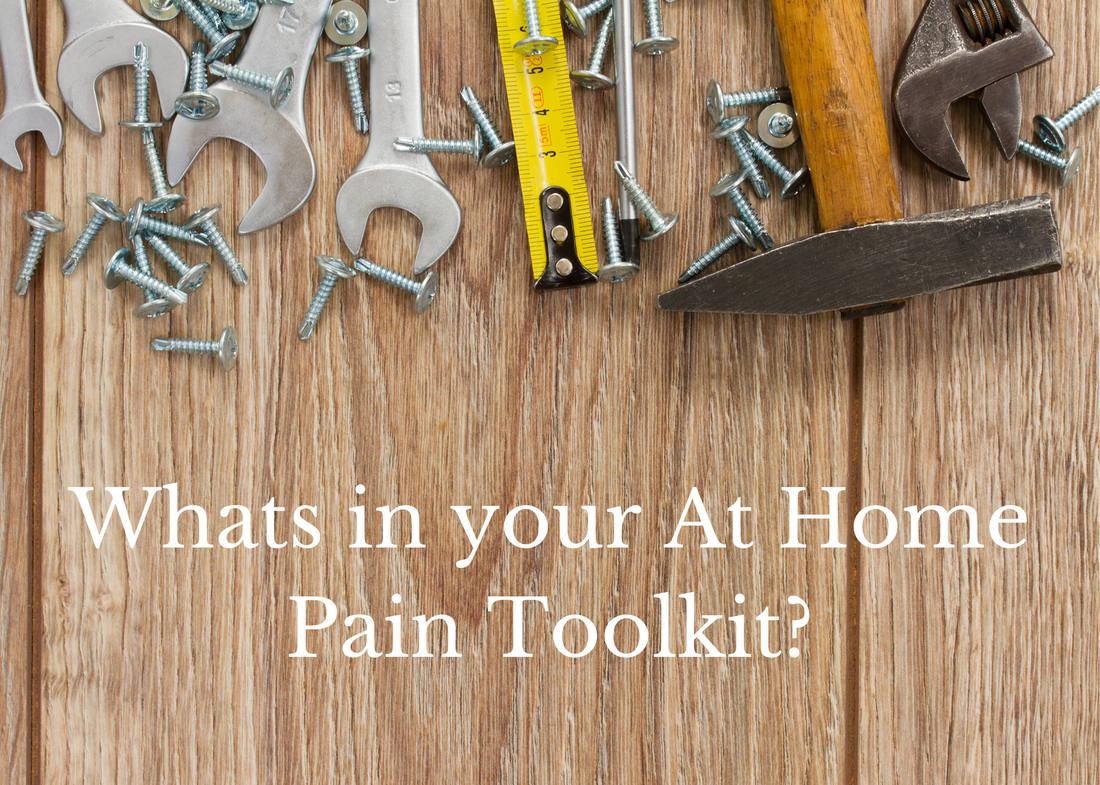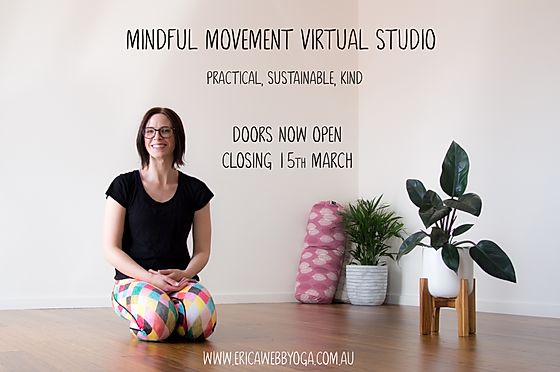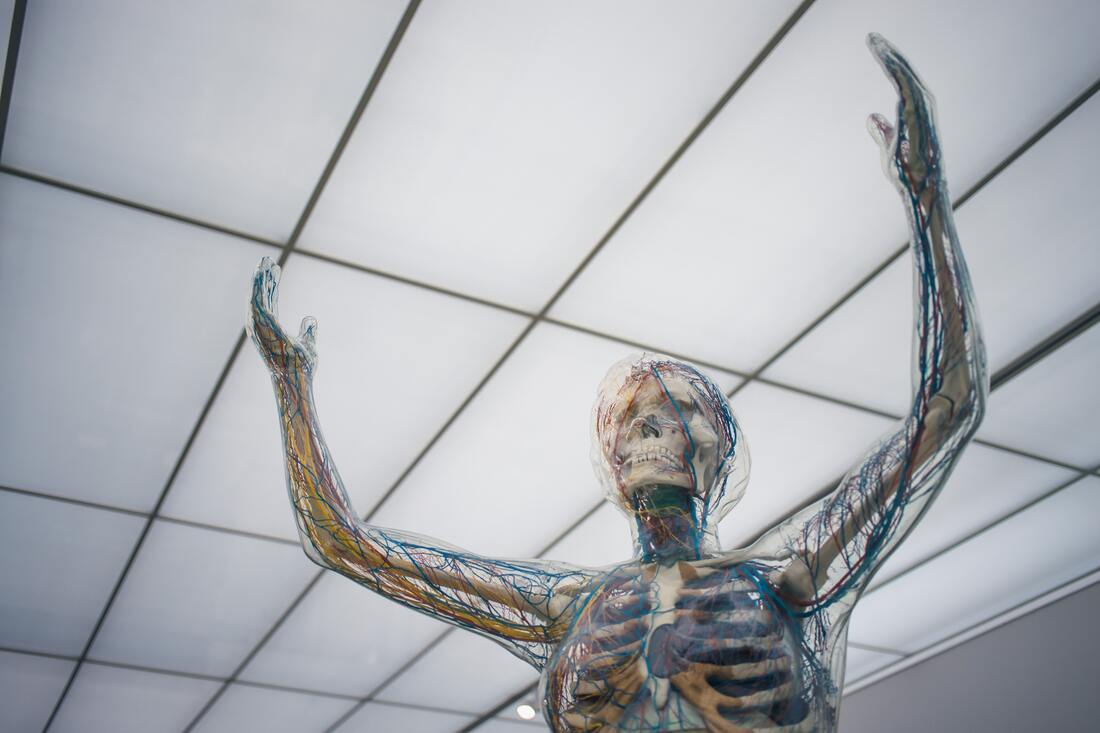|
Predicting how long your body will take to recover from injury or pain can be difficult, because each individual person will have many different factors that can influence their pain.
Your recovery time will depend if your pain is from an acute or chronic issue. We use the terms "acute" and "chronic" to describe your injury or pain type - acute being a new, fresh injury, usually where tissue damage has occurred; and chronic being a longer term condition or pain that continues well after expected tissue healing should have occurred. Acute injuries can include things like ankle sprains, hamstring tears, shoulder dislocations. Usually they happen quickly and are immediately obvious that something is wrong. Maybe you've lifted something too heavy in your gym routine and felt a twinge of pain in your back as a muscle has strained, or you've missed the last step and felt a sharp shock of pain in your hip or knee. High impact blows can also cause acute injuries, like if you have a fall, get in a car accident, or get kicked from a horse. Chronic pain can stem from an originally acute injury. Its common for people to have ongoing pain or sensitivity after an injury that causes a lot of damage. Chronic pain can also be part of many health conditions, like hypermobility and Ehlers Danlos Syndrome, Fibromyalgia, Multiple Sclerosis, and other conditions that affect your nervous system or connective tissue. Chronic pain also describes pain that comes from repetitive patterns of movement or positioning, usually starting as a mild irritation that can build up to be very painful, like De Quervains or "Mummy Thumb" which a lot of new parents experience as intense wrist and thumb pain from holding and feeding their new baby. As a very generalised observation, acute injuries tend to follow fairly predictable recovery pattern as long as normal tissue healing occurs. In fact, the pain of an acute injury can often go away even before the tissue healing has completed, like in the case of a mild ankle sprain where you may be able to weight bear and return to normal movement within a week, even if the tissue around the ankle is still in repair mode. The severity of the acute injury will usually give us an indication of your expected healing time - a mild injury takes a shorter time to recover than a severe injury, this follows our common sense understanding even without medical training. But what about chronic injuries or pain? How can we estimate how long an old injury will take to feel better? And importantly, can we realistically expect long term pain like a very old injury or pain from a lifelong disorder or disease to fully recover? This is where pain starts to become complicated, because in chronic pain patients there are lots of factors involved in the pain outside of damaged muscles, joints or nerves. Chronic pain in one area of your body can lead to pain developing in other areas when your body tries to find different ways of getting things done. If gripping a heavy object becomes painful in your wrists, you may find yourself balancing it on your forearms and tilting backwards from your pelvis instead. As a short term work around this might be ok, but over time you might find yourself with chronic wrist pain AND chronic lower back and hip pain. Unfortunately, if you have a few "layers" of pain areas, this can mean that its likely to take longer to unravel some of the patterns that have lead your body to being in pain. Chronic pain tends to be unpredictable in how long it may take to resolve. For people with pain stemming from lifelong conditions like genetic disorders, autoimmune disease or neurological disorders, the pain is likely to come and go in flares, and our aim for these people is to reduce the severity and frequency of the flares that are a part of their condition. What other factors can contribute to how quickly you recover? Adaptations to movements and positions: Firstly, we need to identify movements or positions you currently do that either exaggerate or relieve your pain. Some of these will be easier to adapt than others - if you notice sitting longer than an hour increases your pain, an easy adaptation may be to get up every 30-60 minutes for a brief stretch. If you spend the majority of your day sitting at your computer, we can look at starting and ending your day with a back extension exercise to decompress your lower back. If we find some movements that relieve your pain, we can look at ways of increasing your time spent doing those movements. We know that we won't be able to change all of the repetitive movements and actions that are needed in your daily life at work and at home, so realistically understanding that some of those things are contributors to your pain means we need to focus on the things we can influence so we can reduce the impact of the things we can't change. There are lots and lots of options for changing some of the movement and position habits your body has built up, and our therapists can help with some suggestions during your appointment. Exercise: Finding a suitable type of exercise for your pain can be very helpful in building strength around the area and in stimulating your body to release its own brand of feel good hormones and neurotransmitters that reduce pain sensations. Exercise might sound very overwhelming to start off, especially if you have a lot of interconnected areas of pain, so our therapists will start you at an appropriate level for where you are at. That might be some mild stretches, a gentle walk or swim, or even a visualisation of doing certain movements. Diet/Nutrition: What you eat influences how your body repairs and recovers. If you have food sensitivities or intolerances this can also effect your bodies inflammatory response - the more inflammation, the more sensitive our nervous system is to pain. If you were already eating a good diet prior to your injury, you are likely in a better position to recover quicker than someone who was eating nutrient-poor food or a diet that caused inflammation. A nutritionist may also be able to recommend supplements that can support your bodies natural healing processes. Fitness & General Health: You may be more likely to have an easier recovery from injury if you were in fairly good health and physical condition before your injury. Your recovery may be slower if you have pre-existing health concerns, including things like diabetes or autoimmune disease. Its never too late to start working towards a healthier lifestyle! Sleep: Good sleep is crucial to good healing. Pain can make sleep very difficult, and this can become a bad cycle of intense pain leading to poor sleep, resulting in feeling fatigued, which causes pain to increase, and so on. Breaking this cycle and getting some proper rest can help with recovery. Using extra pillows to support your body may allow you a longer and deeper sleep. There are also lots of great sleep apps or meditations that some people find useful in falling asleep or getting back to sleep if you wake up in the night. Speak with a nutritionist or pharmacist about night time supplements that can help aid with sleep. Nervous System Health: Chronic pain is often just as much about your nervous system as it is about your musculoskeletal system. This means if you are highly anxious, stressed, depressed, or just have a lot on your plate right now, that your pain levels may be higher than normal. The nervous system controls your entire body, so while we're not saying "your pain is in your head, you're making it up!" what we are saying is that if your nervous system is working overtime then its much more likely that your pain will be noticeable even in response to small actions. Think of it like a kettle that has just boiled, it takes much less time to reboil the kettle because its already hot. The nervous system is similar, it will take much less action for your nervous system to turn up the volume on your pain because its already on high alert. Finding ways of supporting your nervous system is crucial for long term chronic pain conditions. This is also why medications for anxiety and depression are often prescribed for people with ongoing pain. There are lots of natural or herbal supplement options available through Naturopaths and health stores. Setting a nervous system health routine for yourself is also a hugely valuable part of managing stress and overwhelm, and this might include things like mindfulness, meditation, relaxation, affirmations, or anything else that helps you to tone down nervous system activity. Self Care Tools: Treatments with your practitioner are great, but having the tools and know-how to apply treatment principles at home goes a long way to helping you take charge of your recovery. We can teach you how to use a range of tools for releasing tight spots in your body so that you have some tricks up your sleeve for between treatments. Treatment: Get the type of treatment that your body responds to. Some people respond best to hands on treatments like massage, cupping and dry needling. Some people go better with active exercise based treatments. Our therapists can advise you of the treatment types that have been reported to work best for your type of pain, but ultimately each individual body can react differently, and we'll work towards finding the best combination of treatment techniques for you. Be aware that trying too many treatment types at once for the same issue can make it very difficult for any of your health practitioners to determine which treatment is effective. This is also why we'll often pick a small number of Myotherapy techniques to use in each treatment, because if we use absolutely everything we know all at once, its very hard to know what worked and what didn't. Go into your first treatment expecting that it might take your body a little while to start making long term changes, especially if your pain has been there for a long time and if repetitive movements and positions seem to be a big part of your pain hanging around. Try your first appointment with us for $97 (normally $115) Book an appointment with us now. When you have chronic pain, you get very familiar with pain that makes itself known every day. You may have some good days and some bad days, but either way its good to have a toolkit of things you can do at home to help reduce, manage or avoid pain flare ups. This is even more important now, while Melbourne is under Stage 4 Restrictions in response to COVID19 and seeing your Myotherapist is no longer an option. Your toolkit will likely be different to someone elses, but these are some of the things that you can incorporate at home to help keep pain as low as possible.
Gentle movement - Walking, yoga, pilates, dancing, cycling, and other low impact exercises to keep your joints and muscles mobile. What you can achieve may change day by day, work within your own limits. There are plenty of free or affordable online options, my favourite that I'm personally using throughout lockdown is Erica Webb Yoga & Pilates virtual studio ($37 a month for unlimited classes) Stretching - Make time to stretch each day, especially the muscles that feel tightest. If you're working from home, its really easy to get stuck sitting for hours at your desk - or couch, coffee table, hammock, whatever your work from home set up looks like. Self care tools - Foam rollers, tennis balls and spiky balls, acupressure mats, TENS machines: these can all help reduce muscle pain and tension. Don't have one? You can pick these up cheap online on eBay or through sports stores. Hot or cold therapy - Heat packs, hot water bottles, electric blankets to keep you warm and take away some of the ache. Ice packs or cool compresses can work better for acute inflammation areas or for numbing persistent pain. Nutrition and hydration - Eat well, drink water, and avoid foods that tend to flare up your pain. Pre-plan meals and snacks so you can have some easy to grab options on bad pain days where you don't have the energy to cook (or clean!) Stress management - Easier said than done during a pandemic, right? Find things that bring down your stress levels, that will be different for each person, but some classics include reading, listening to music, taking a nap, having a warm soak in epsom salts, booking a telehealth appointment with a counsellor, writing in a journal. Seek support - Don't suffer alone! Reach out for a conversation with your friends, family, coworkers, neighbours. Don't forget there are plenty of services to support you, including talking with your GP, a counsellor, and support groups online. Pain relief - I know a lot of our patients choose not to use pain relievers, but in these times where its hard to get access to hands on treatments that help, you may find that taking pain relief is helpful. This may include prescribed medications from your GP or over the counter recommendations from your pharmacist. Gels and creams - There are a heap of options for topical pain creams, the most commonly used ones include Deep Heat, Fisiocrem, and Voltaren. My personal favourite is a non-pharmaceutical blend by Doterra called Ice Blue Rub, its got a cooling menthol effect that is fairly long lasting, but it is on the pricey side for a cream. A little goes a long way! Sleep - What can you do to optimise your sleep cycle? A well rested body has the best opportunities to repair and recover. Some things to experiment with are an earlier bed time, switching off screens well before bed, changing your pillow, listening to relaxing music. We hope it won't be long now until we're able to offer hands on treatments again. As soon as we know more, we'll make an announcement and get our online booking page active again. Our Myotherapists help a lot of people with scoliosis of varying degrees, from very mild curves to more exaggerated curves that permanently alter posture. Myotherapy is not a cure for scoliosis, but ask any of our patients and they'll agree that managing the pain and muscle fatigue is much easier with a regular treatment to help manually decrease the load and pressure on their spine. What is Scoliosis?
Scoliosis is a curvature of the spine to the right or left, creating a C or S shaped spine. It usually begins at puberty during growth spurts. Most people with scoliosis will have mild symptoms that can be managed by staying active and using therapies and tools that manage muscle tension and discomfort. What do Myotherapists do to help someone with scoliosis? As always, we start with an assessment. We'll look at your back, and how you move and check where you feel pain during your movement. You'll probably notice you have regular patterns that your scoliosis follows - like one hip or shoulder sitting higher than the other, one shoulder that rolls forward or backward more, or a particular painful spot that gets really tight or feels like it builds up pressure. Hands on massage treatment is always a favourite with our patients. Why? It feels good! And it helps to stimulate the over-tired muscles supporting the spine. This can help reduce the muscle tension and fatigue, and let those high-pressure areas feel some relief. Cupping is a technique that works particularly well for a lot of our scoliosis patients. We use cupping to help get a quick change in muscle tightness and reduce trigger point areas, while also bringing lots of new, fresh blood to the muscles to help them heal and release. The cups have a pressure valve and a pump that we use to create the gentle suction effect, which stretches the muscles and connective tissue under and around each cup, and stimulates increased bloodflow to that area. They can feel a little pinchy at first especially over tight areas, but after a few minutes that feeling usually goes away, and when the suction is broken the pressure releases and leaves the muscles feeling warm, stretched and more mobile. The relief that comes after a treatment can be extended by using taping to help support your spine, hips and shoulders. Did you know you can keep the tape on for up to a week? How often do I need to see a Myotherapist? When you first come in, we like to see you again within 1-2 weeks to see how your first treatment settles in. From there we can work out the best schedule for you to keep painful flare ups at bay. This is really different person to person, but the average is about every 2-4 weeks - for some people we spend a little longer doing weekly treatments until it starts lasting longer, and for some people we can move to a 6-8 week schedule. If you experience a pain flare up, come in for an appointment so we can settle the flare as quickly as possible and get you back to your normal maintenance routine. How do I get an appointment? Appointments can be made online or you can phone Mel on 0401212934. Do you know what sets off your pain into a flare up? We call these triggers, and they can be different for everyone. Knowing your triggers can be particularly helpful if you have a pain condition that has a flare/settle cycle, because it can help you avoid triggering things or situations, or help you prepare for an oncoming flare. We often see people who don’t know what their triggers are. This can be a pretty scary situation for them, because their pain seems random and uncontrollable, but for most people there are at least some consistent triggers for their pain and with a little investigation we can usually pin down some of the big ones. Some of the most common triggers include: Stress – Of course! Stress and demands pulling in every direction is bad enough when you don’t have pain, but this is one of the really big triggers for setting off bad pain flares. Over doing it – Pushing yourself too hard is probably one of the most common triggers for an increase in pain. This can look like lifting something heavier than you’re capable of, walking further than you normally can, rushing around doing more errands than usual. The trap is usually that you have a day where you actually feel pretty good and capable, so you do as much as you can while you're feeling good and then - bam! On comes the flare from over doing it! Change in air pressure – Theres not a lot of great research on this, but I can tell you from clinical experience there are a huge number of people who get pain flares when the weather changes, particularly if a storm is about to roll in. Headaches, migraines, joint pain, nausea, nerve pain – these can all flare if the air pressure changes suddenly. Sometimes people affected by this trigger can tell its going to rain hours before it starts because they start to feel those symptoms. Temperature – Sudden changes of temperature can also flare up some pains. This usually happens in the peak of summer or winter, especially if you go from a cool air conditioned space into the Melbourne heat wave, or getting out of your warm car into the cold air of a single digit day. Medication – Changes to medication or forgetting to take medication can set off a pain flare up. If its from changes to medication, make sure that you note it down and let your GP know when you see them next. Sleep – Usually it’s a lack of sleep that causes the pain to increase. Sleep deprivation can lead to feeling run down, slowed thought processes, memory issues, low mood, and can increase sensitivity to pain. I recently wrote a blog with some general tips for aiding your sleep cycle, which you can read here. Illness and infection – Picking up a cold or virus that’s going around can certainly flare up existing pain conditions. Your body uses a lot of extra resources when it needs to fight off illness or infection, so this can be particularly involved for people who already have weakened immune systems. Certain movements – Sometimes your pain can be increased by specific movements, like shoulder pain that hurts more if you reach overhead. As Myotherapists, we can help you identify the specific movements that are responsible, and create a treatment plan that addresses those areas so we can get you moving better and with less pain. Food – Food allergies or sensitivities are very common, and some of these can trigger pain and inflammation. Common ones can be things like gluten, sugar, and processed foods. A Nutritionist like our friend Samantha Gemmell can help you identify foods that may be causing you to have flare ups and help you plan some alternatives. Chemicals – Sensitivity to chemicals can also increase pain. Consider the types of dish liquid, washing powder and cleaning chemicals you use at home. If you consistently get flare ups after using these, it may be time to try alternative products and see if it makes a difference. Body products – Similar to chemicals for cleaning your house, the products you use on your body can also trigger pain in some people. This can include body wash, hair care, skin care and make up, deodorants and dental products. These are just some of the common things that we see. We always recommend that you keep a good eye out and become a little investigator into your own triggers. Sometimes a trigger or symptom journal can help in identifying the things that are setting you off. If you want to do this, we suggest you start by taking note each time you experience a flare up and jot down anything you have done, eaten, interacted with around the time of the flare up. This will help you start to notice patterns that your pain follows. Some things will be easier to avoid than others – for example, not eating gluten will be much easier to do than not being exposed to air pressure. But for things like weather that are out of your control, you can make a mitigation plan by checking the Bureau of Meteorology and planning to be somewhere comfortable and safe if a major storm is predicted. We can also help you identify some of these triggers and help you make plans for your triggers. Talk to us about this at your next appointment so that we can support you. Have you ever found that gentle movement such as yoga helped to alleviate your symptoms, but you struggle to go to a regular class? Here at Simple Wellness Myotherapy, we know how good moving your body can be - for your muscles, joints, tendons and ligaments, as well as your nervous system and your mind! But we also know that it can be tough to get to a class when you're feeling sore or brain-foggy. That's why we sat down with Erica Webb, a Yoga, Mat Pilates and Somatic Exercise Coach for a chat. If you're looking to incorporate movement in the comfort of your own home, her Mindful Movement Virtual Studio might be for you. Hi Erica! Thanks for joining us.
Could you start off by telling us a little about yourself and the Mindful Movement Virtual Studio? Thanks guys! I’m a Yoga, Mat Pilates and Somatic Exercise Coach based in Melbourne, Australia. As well as a mindful movement coach, I am a mother to two young boys and a writer and illustrator. At my core I'm curious, kind, committed and just the right amount of quirky! I truly believe that movement is powerful. Mindful movement is more powerful still. That’s why I created The Mindful Movement Virtual Studio. The Mindful Movement Virtual Studio is an online Yoga, Pilates and Somatic Exercise Studio. It allows you to do your movement practice from anywhere, anytime. But it’s more than just a library of classes. It’s also a space where you’re supported! We talk about mindset, forming habits and other practical elements that make a home practice do-able and sustainable. As part of the Studio, we also offer live masterclasses, weekly Q&As and more. Who is this Virtual Studio for? People who want to feel better in their own bodies! Many of my clients are busy women who want to feel better and know they need to commit to look after themselves and take responsibility. It’s also for people who simply don’t get the chance to go to a local yoga class. It might be that you’re juggling around kids, or that you have pain or a condition that makes it difficult for you to make a regular class. Is there anyone who wouldn’t benefit from this service? I can really only think of two:
Does someone need to have experience with yoga to benefit from the Virtual Studio? Not at all! Many people who join are brand-new to yoga. But for those who do know their yoga, it’s beneficial because we use a lot of techniques and poses that aren’t commonly used in the average yoga class. Do we need to commit a lot of time to see the benefits? No! Most of the classes are 30 minutes or less. There are some that are only 5 minutes, and some go up to an hour. So it’s more about committing little chunks of time on a regular basis, rather than committing to a dozen hours every single week. Do we need to be skinny, super fit, bendy or decked out in the latest activewear to do these classes? Firstly: you can rock up in your PJs if you want to! Secondly, these classes are designed to be inclusive – you can be whatever size, fitness level and flexibility level and still reap the benefits. Do we need fancy equipment? A few of the classes incorporate props, but there are always at-home alternatives you can use. Many people use pillows and blankets as their props! However, you can always filter the classes to find a prop-free video if you need. Are the classes appropriate for people who have pain or ongoing injuries? If you have a condition or injury that might impact your ability to engage in physical activity, I always recommend getting clearance from your health professional first. With that in mind, the majority of classes are gentle and have variations to suit almost any issue. For example, some of the classes can be done while seated. Some of the more advanced classes may not suit for some types of injury or pain that affect the function of your muscles. If you’re unsure, you’re welcome to contact me directly about a specific class and whether it’s right for you. What if we need a little extra support with anything? I’m here to help! I make sure that I’m available for people to ask questions. Feel free to reach out if you need anything. Ok, you’ve got us: how do we sign up? If you’re ready to prioritise YOU, make time to move well and feel well, head to this link to join! The doors are open until Sunday 15th March. Have you or someone you love been diagnosed with multiple sclerosis? The symptoms of this condition can range from uncomfortable to debilitating. But the good news is that manual therapy techniques that fall under the scope of myotherapy can help to alleviate some of these symptoms. Let’s take a look at how myotherapy can help with multiple sclerosis. What is multiple sclerosis? Multiple sclerosis, or MS, is an autoimmune disorder that affects the central nervous system. ‘Sclerosis’ means ‘scars’, which occur throughout the central nervous system. These scars interfere with the nerve impulses within the brain, the spinal cord and the optic nerves. Because the scars can occur anywhere throughout the central nervous system, different symptoms can manifest. Over 25,000 Australians have been diagnosed with MS. Most are diagnosed between the ages of 20-40, but it can occur in people who are younger or older. Women are far more likely to be diagnosed with MS. What are the symptoms of multiple sclerosis? Because multiple sclerosis can occur throughout the nervous system, there is a wide range of symptoms that people with MS may experience. No two cases are the same. However, symptoms will typically fall under five main categories:
How can myotherapy help with multiple sclerosis? This can really depend on the primary symptoms you’re looking to manage. However, myotherapy has a diverse range of tools and techniques that may help to minimise symptoms related to motor control, fatigue and neurological issues. Some of the symptoms myotherapy may help to relieve include:
Massage and multiple sclerosis One of myotherapy’s tools that has some promising research to back it up is massage therapy. There have been several small studies into the benefits of massage therapy for MS. They found that massage therapy was able to relieve pain, fatigue and quality of life. One study found that massage was more effective at relieving symptoms compared to exercise therapy. It also suggested that combining massage with exercise therapy could have even greater benefits. Managing multiple sclerosis symptoms with Simple Wellness Myotherapy Here are Simple Wellness Myotherapy, we have had patient outcomes such as:
Every case of MS is unique, so we cannot guarantee that you will achieve the same results. But we can say that our practitioners are experienced when it comes to MS, and will go the extra mile to help you find as much relief as possible. Simple Wellness Myotherapy also works as a healthcare provider for those receiving employment assistance through MS Employment Services. If you are receiving employment assistance, you can have a chat with your Occupational Therapist to see if myotherapy can be incorporated into your package. Ready to make a booking? Click here to visit our booking page. |
Meet Our Team
We have a team of great practitioners available 7 days a week at our Rowville clinic. Archives
July 2024
Categories
All
|
Got a question about Myotherapy?
Contact Mel by phone, email or Facebook
|
Simple Wellness Myotherapy & Remedial Massage Clinic
Shop 12B 150 Kelletts Rd Rowville VIC 3178 |
Phone us on
03 8204 0970 |






 RSS Feed
RSS Feed